
The Wesleyan Methodist Chapel was opened on Wednesday 12th June 1880, in Ship Lane. It finally closed in 2019.

The Wesleyan Methodist Chapel was opened on Wednesday 12th June 1880, in Ship Lane. It finally closed in 2019.
Albert Joseph Caldwell, Chief Engine Room Artificer, H.M.S. Wivern – 6th October 1939 at sea
Donald Eastburn Waterman, Second Lieutenant, Royal Artillery – 31st May 1940, Dunkirk
Richard Swaffer, Driver, Royal Army Service Corps – 1st June 1940, Dunkirk
Alfred James Wyatt, Leading Steward, H.M.S. Badger – 7th November 1941
Albert Chapman, Trooper, 10th Royal Hussars (Prince of Own) Royal Armoured Corps – 29th May 1942, Libya
Sydney Stephen Dimond, Pilot Officer, Royal Air Force Volunteer Reserve – 31st May 1942, Germany
Ronald Alfred Lakin, Signalman, Royal Corps of Signals – 14th November 1942, Egypt
David Ovenden, Serjeant, Dorsetshire Regiment – 30th July 1943, Sicily
Leslie John Victor Cotton, Pilot Officer (Air Gnr.), Royal Air Force Volunteer Reserve – 31st August 1943
Horace Arthur Wills, Gunner, Royal Artillery – 13th March 1944 at sea
Charles Louis Carpenter, Flight Sergeant (Air Gnr.), Royal Air Force Volunteer Reserve – 8th July 1944, Normandy
Victor Stephen Wright, Sergeant, Royal Air Force Volunteer Reserve – 16th October 1944
Herbert George Gunner, Private, King’s Own Scottish Borderers – 5th November 1944, Netherlands
William Edward Heaton Barty, Pilot Officer, Royal Air Force Volunteer Reserve – 6th December 1944
Horace Arthur Wills, Gunner, Royal Artillery – 16th December 1944, Israel
Harold Frederick William Humphries, Serjeant, South Lancashire Regiment – 6th January 1945, Netherlands
Frederick Albert Weekes, Trooper, Special Service Battalion, S.A. Forces – 21st April 1945, Italy
Frank Raymond Rogers – Gunner, Royal Artillery – 5th May 1945, Italy
Alice Turner – Civilian casualty – 6th February 1944
Daisy Wright – Civilian casualty – 23rd February 1944
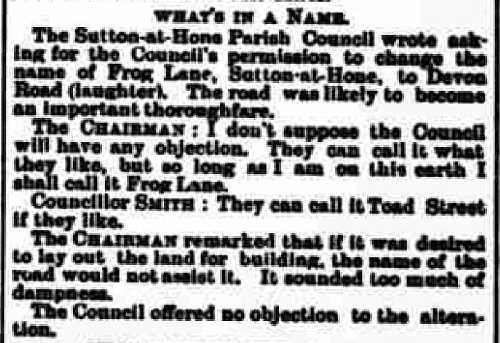
In August 1903 Dartford Rural District Council was asked to approve the change of name of Frog Lane to Devon Road. However there does seem to have been some confusion about the new name.
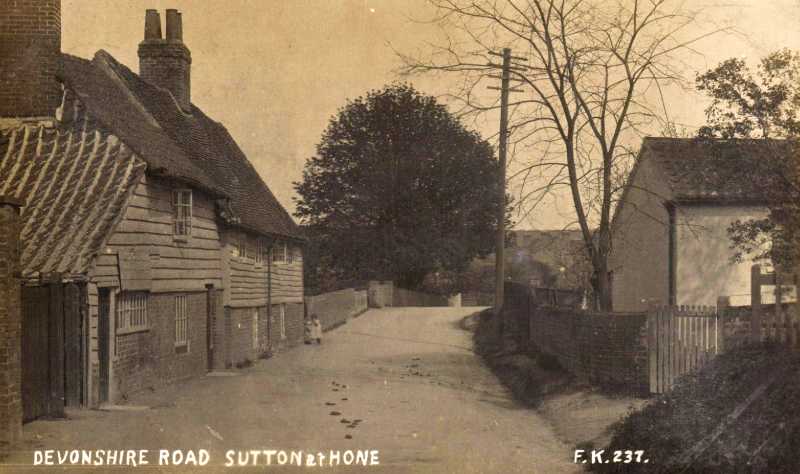
“Good Intent” Lodge of Oddfellows
On Saturday 16 January, the juvenile members of the Lodge held their annual tea and pictures show. About 80 sat down for tea, which was followed by some educational films. Bro. G.M. Cronk welcomed the parents and friends, as well as the Vicar of Sutton at Hone, and spoke of the progress of the juvenile section. All the little guests were given a gift by Father Christmas.
Sutton at Hone Sunday School Treat
The Sutton at Hone Sunday School treat and prize distribution was held at the Village Hall on Wednesday 20th January, the children had tea and then enjoyed a programme of games before the prize giving.
Prize winners were: Dorothy Poole, Eileen Lee, Sheila Poole, Alice Shepherd, Edith Saunders, Mabel Hills, Winnie French, Muriel Millinder, Pamela Payne, Vera Poole, Molly Dean, Molly Smith, Phyllis Taylor, Barbara Burgess, Julia Palmer, Joan Collister, Audrey Watts.
Boys – John Palmer, Trafford Bridges, Fred Bridges, Alan Dean, Victor Wright, Roy Skillem, Peter Burgess, Ronald Burgess, Maurice Kitchener, Jack Burgess, Peter Skelton, Peter Mayne.
The helpers were Miss Barton, Miss Say, Miss R. Fowler, Miss B. Fowler, Miss Stanley, Miss Wheeler, Miss Sawyer, the Misses Elliot and Mr Kadwill (Headmaster & Scout Master).
The Wellcome Institute has digitised its archive and library and anyone can access the collection online. Amongst the books available online are the Medical Officers’ Reports for Dartford Rural District Council, and these reports contain a variety of statistics on health, births and deaths, vaccinations, housing and food safety.
The housing reports after 1950 contain information about the demolition of housing, including properties in Sutton at Hone, Hawley, South Darenth and Horton Kirby.
In the 1950 report, the only local properties demolished were 5,7 and 9 Devon Road, Sutton at Hone
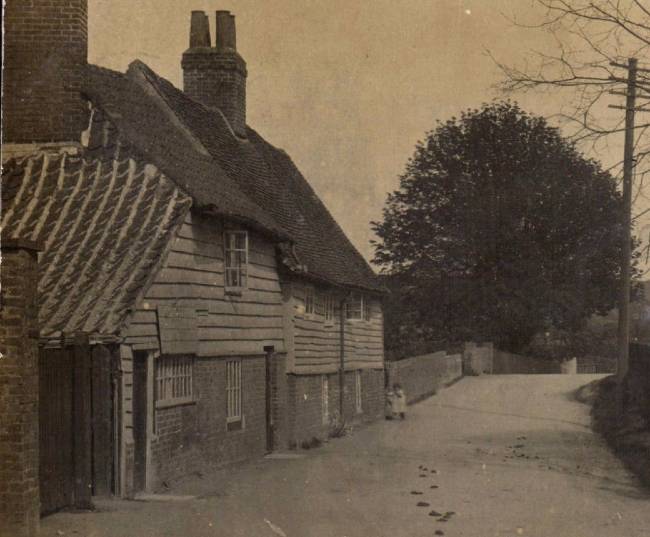
In the 1952 report, the only local properties demolished were Nos 1, 2, 3, 4, 5 and 6 Burnt House Lane, Hawley.
In the 1953 report the only properties demolished were the Mill House, South Darenth, and The Old Gills, South Darenth. Additionally, it was agreed that 42 Main Road, Sutton at Hone would not be used for human habitation.
1954 – Flint Cottage, Old Gills, South Darenth was demolished.
1955 – 48 and 50 Main Road, Sutton at Hone were demolished.
1956 – 2 Main Road, Sutton at Hone was demolished
1957 – Spring Villa, Hawley, 30, 40 & 44 Main Road, Sutton at Hone and 1-4 Days Cottages, Horton Kirby were all issued with demolition orders. 1 – 10 Sharps Row, Horton Kirby had a closure order issued, and 5 Giffords Cottages, South Darenth would no longer be let out.
In 1958, Paddock View, Hawley was demolished in May, and Cedar Lawn Cottage, Sutton at Hone and Well Cottage, Dean Bottom were issued with demolition notices.
1959 saw a number of demolished buildings: a bungalow at the rear of Cromwell Villas, Sutton at Hone; Well Cottage, Dean Bottom; Russell House and 1 & 9 Sharps Row, Horton Kirby and Spring Villa, Hawley Road, Hawley.
1960 saw Cedar Lawn Cottage, Devon Road, Sutton at Hone; 2-8 and 10 Sharps Row, Horton Kirby demolished. Closure orders were issued for 38, 40, 42 and 44 Main Road Sutton at Hone and 2 Poplar Cottages, Horton Kirby.
1961 – 1-4 Days Cottages The Street, Horton Kirby were demolished
1962 – 5 & 6 Days Cottages, The Street and 1 – 8 Kemps Cottages in Horton Kirby were demolished.
1966 – Houses demolished or closed: 5 Giffords Cottage, Horton Road, South Darenth; 1-4 Lombard Cottages, Horton Kirby and 50 Main Road, Sutton at Hone
1967 – Houses demolished or closed: 224 to 230 (even) Main Road, Sutton at Hone
1968 – Houses demolished or closed: 1-4 Bank Houses, Hawley Road, Hawley
1969 – Houses demolished or closed: 50 Main Road, Sutton at Hone
1972 – Demolished – 284 to 306 Main Road, Sutton at Hone
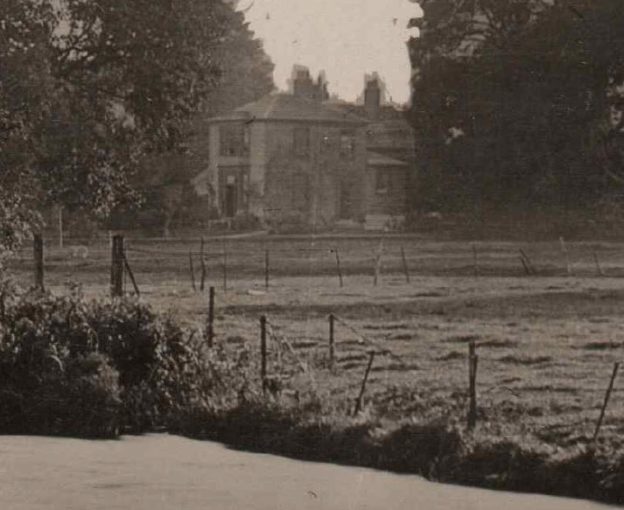
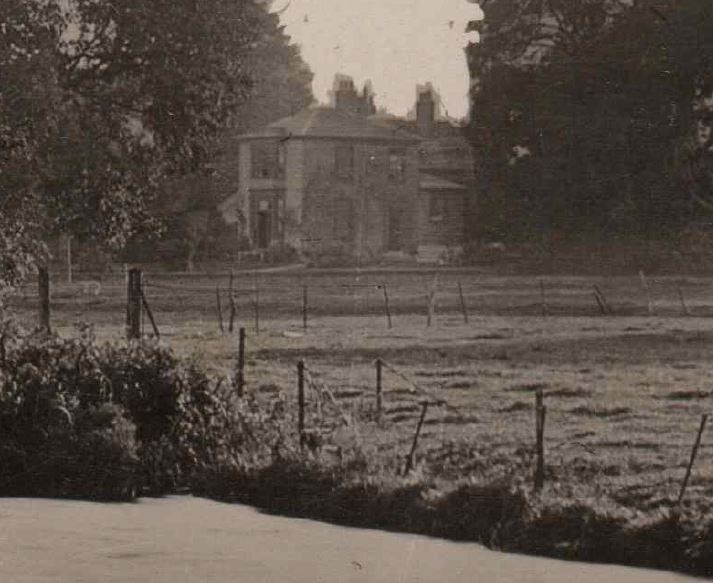
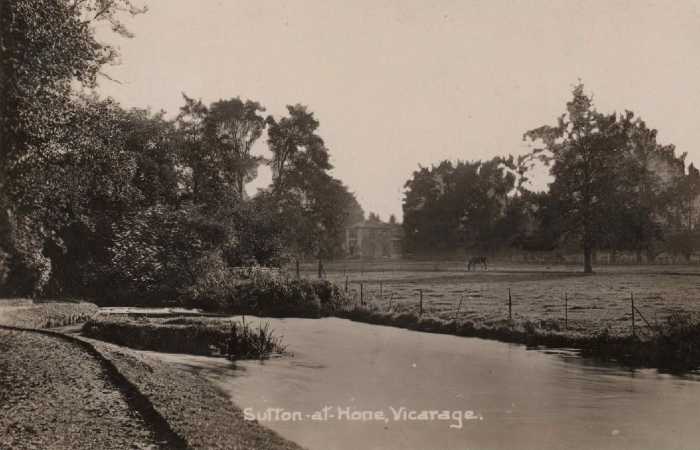
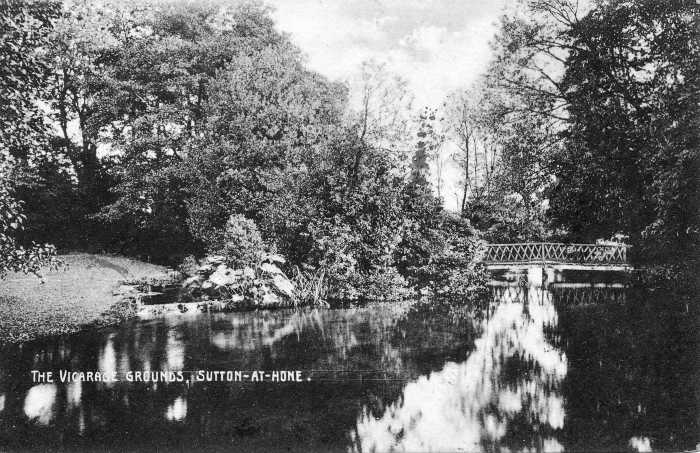
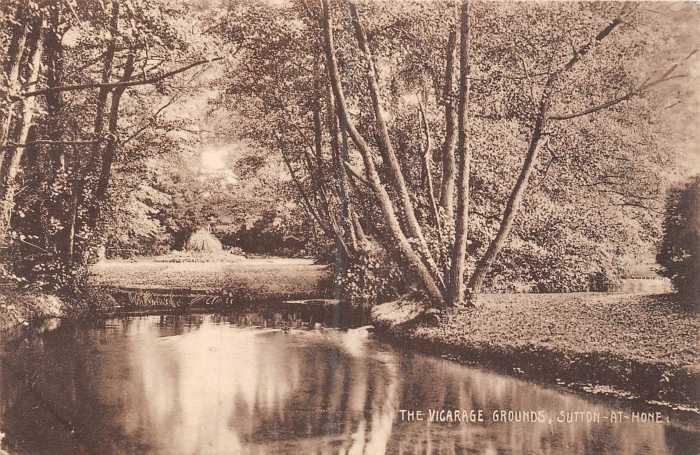
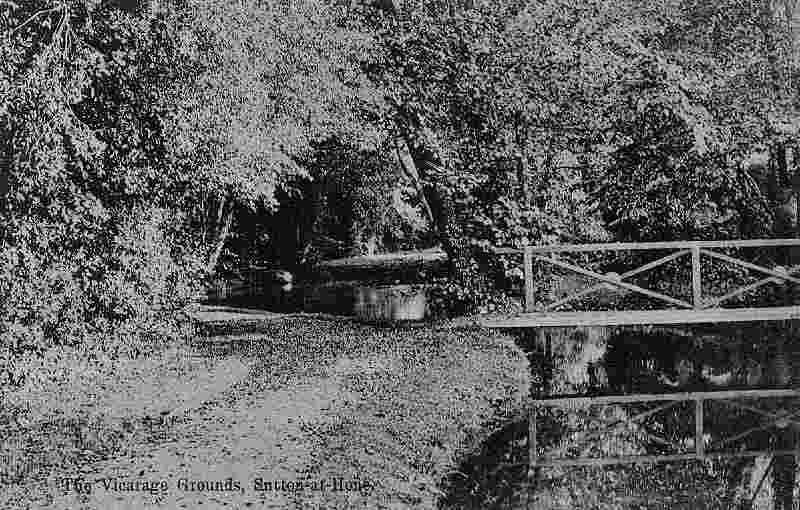
The vicarage gardens were developed by the Reverend John Hallam Hotham, and he was reputed to have used old stone work from the church remodelling in his garden landscaping.
Eighty years ago on 29th September, in the first month of the Second World War, every one in the country was recorded on a form, issued to and completed by each household, and the data was used to create National Identity cards. The form recorded the address, first and last name, gender, marital status, date of birth, and occupation.
The completed records give us a snapshot of who was living in the villages at the beginning of the war and often mentions what war work they undertook, although anyone who is still living has their record blacked out.
There is a “Cosy Tea Rooms” near Gostelow’s Butchers, and at Ship Meadows (where Longmarsh View was constructed after the war), had a group of showmen and their families staying on it along with several public works contractors.
At St John’s Jerusalem, Sir Stephen’s wife Lady Bridget and their daughter Miranda were at home, with a parlourmaid, housemaid, kitchenmaid and cook, and some other visitors including children. Sir Stephen himself is recorded as being at the BBC at Langham Place, along with four other colleagues, and was described as Controller BBC (Public Relations).
Strangely there is another entry for St John’s, after Cedar Lawn, which shows Miranda again as well as 15 blanked out entries. At Cedar Lawn, which is where Cedar Drive was built, the owner, Miss Russell, formerly of St John’s, had two ladies living with her who were described as “Official Helpers for Evacuated Children”.
At the top of Devon Road, at Hill Cottage, there are 28 blacked out records, so presumably there were 28 evacuees billeted at the house (which is boggling as the house is not that big….), and other houses in Devon Road do have large numbers of blanked out entries, which may mean that there were a large number of evacuees billeted with residents,
In Hawley, the Bull Hotel (now the Hawley Kitchen) had a number of fitters (armament workers) staying, and at Hawley Manor Mrs Mabel Temple Johnson, described as an invalid lived with her daughter Rosemary Wright, a maid, a lady’s maid as well as two more Official Helpers with Evacuated Children, although apparently not a large number of evacuated children.
The Vicar Caryl Sampson, was living at the Vicarage with his housekeeper, and was also described as Billeting Officer for Sutton at Hone, and seems to have had some evacuees living with him.
On Wednesday 4th September 1912, at the Dartford Wesleyan Church, Miss Ellen May Squire of Tyneholme, Hawley, got married. Whilst Ellen (or Helen according to the 1911 census) was born in Erith, her father Thomas Firth Squire was born in Gateshead, and his wife Jane was born in Northumberland, The family had been living in Lewisham in 1901, so had not lived in the parish for very long.
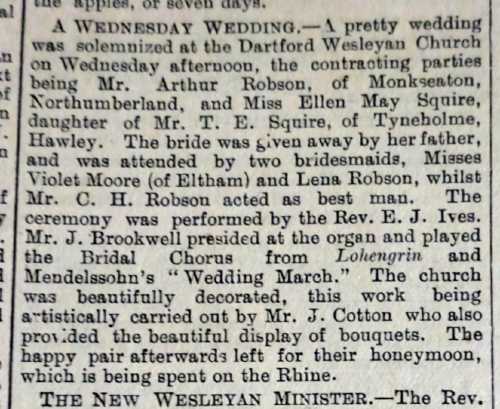
In the same edition of the Dartford Express, on Friday 6th September, there was this item
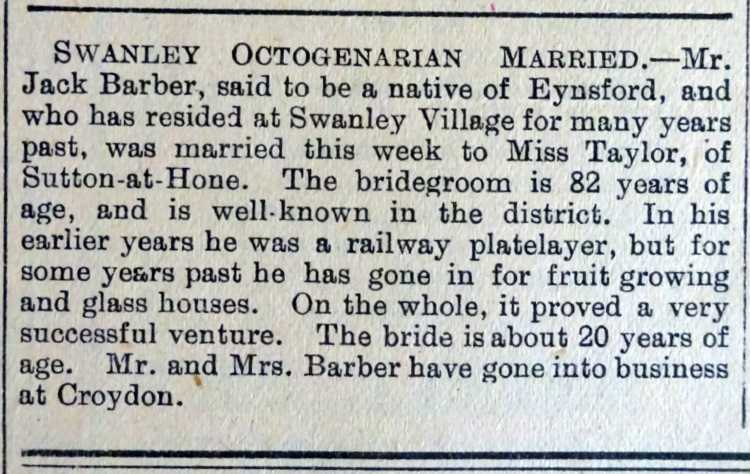
The following week there appeared this letter in the Dartford Express
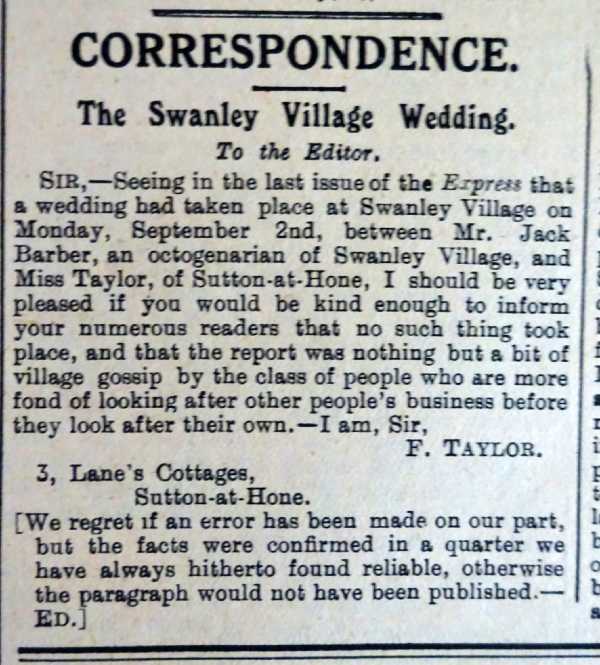
So village gossip could spread far and wide. It seems likely that the author of the letter is Fanny Taylor, who was 24 at the time, and was probably thought to be the intended bride.
Looking through the Times Archive, I came across a letter on the 4th May, 1962 from Mrs Pemberton-Piggott (nee Miranda Tallents) who was complaining that the Dartford Rural Council had decreed that the address of St John’s Jerusalem was now to be known as 79 Main Road, and the Number was to be marked on the property within a week of the notification, otherwise there would be a fine of 40s.
Mrs Pemberton-Pigott felt that this move was indicative of the creeping suburbanisation of the Darent Valley,
The following day another letter was published from another Sutton at Hone resident, Martin May of the Hollies, who expressed his sympathy to Mrs Pemberton-Pigott.
However he pointed out that St John’s had been given just the No. 79 for the entire property, although the house next to his, Homefield, described as having a “fairly ample frontage” was given the numbers 68 – 78.
From the perspective of 2019, the numbering methodology seems illogical, as the frontage of St John’s is probably five times that of Homefield at that time. Homefield was demolished in the 1970s and Dairy Close was built on the site.
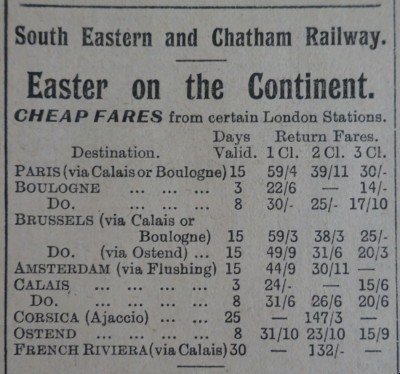

If you had some money, it was possible to go to the Continent for your Easter holidays, with a 3rd class return to Boulogne costing 14s for 3 days, or you could have a 15 day trip to Brussels via Ostend for 20s 3d.
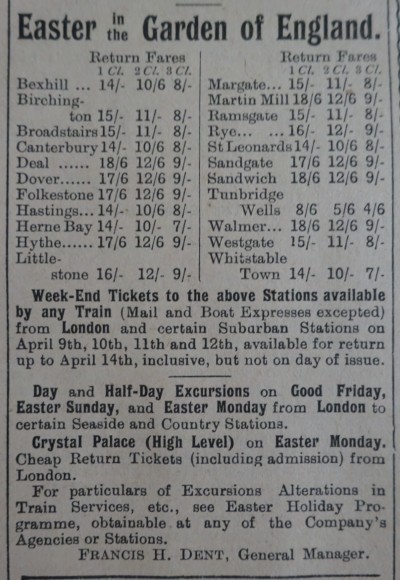
If you did not have the holiday or budget for continental travel, then a day trip to the seaside was possible, and Herne Bay was the cheapest destination with a 3rd class ticket costing 7s.
The following newspaper article explained the travel options in more details.
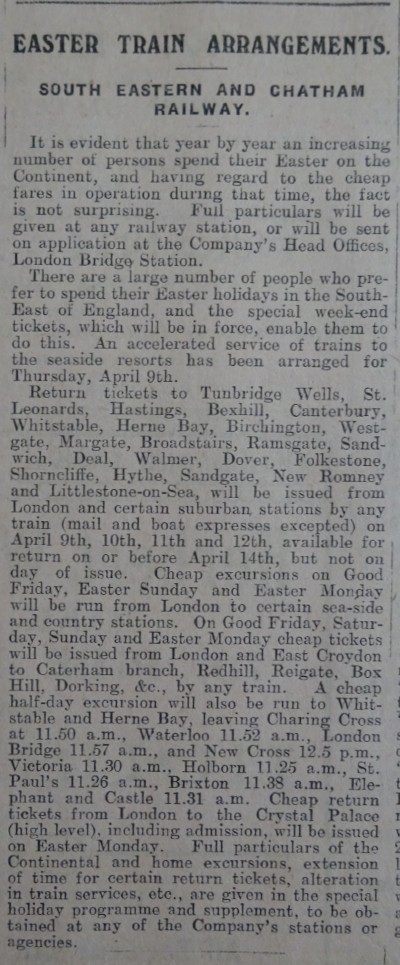
From the Dartford Express, 3rd April 1914